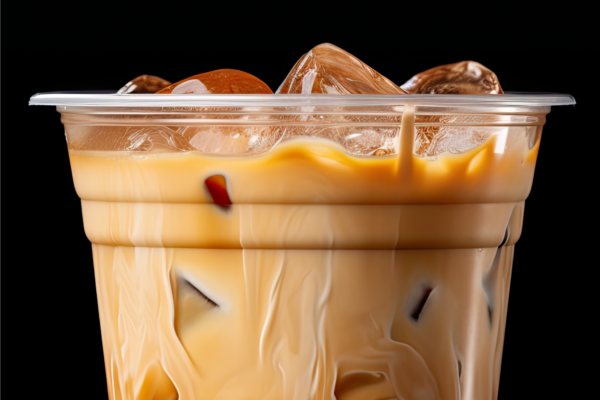The U.S. foodservice landscape is dynamic and vast, and with over 1.8 million locations and 18,000 chains, it can be difficult to stay on top of this ever-changing industry. Considering the sheer quantity of players, chain restaurant operators must not only master their own brand but track and manage a plethora of competitive variables, from competitive crossover (where else are your guests dining?), and competitive substitution (where do your guests dine when your brand isn’t available?), to consumer preferences for who is the ideal option for date night, or who is thought to have the best value meals.
With this level of complexity and change it can be hard for operators to figure out where to start. Below we investigate how the universe of 18,000 chains are performing at a macro level, unpack consumer perceptions on menu innovation and limited-time offers (LTOs), and showcase the power of pricing analytics in making well-informed pricing strategies.
Competitive Market Intelligence
In the chain restaurant environment, the past 12 months have been a bit of a mixed bag with chain unit counts down slightly, and national chains decreasing the most with a 679 unit decline. Considering the unprecedented events of the last three years these numbers are still quite strong, but averages only tell part of the story.
A few chains are significantly outperforming averages when it comes to unit count growth, including modern concepts like Everytable (currently found in New York and California, on a mission to sell fresh healthy food at low prices through traditional restaurants, vending and subscriptions), and single-focus restaurants like Crumbl (cookies) and Mochinut (mochi donuts).
Chain presence in our nation’s 10 largest metros was generally shrinking on average over the past year, but expansion occurred in Atlanta, Chicago and Phoenix.
By cuisine type, the biggest growth in the past year comes from Asian and BBQ operators, and biggest declines from Burger and Sandwich. This doesn’t mean now isn’t a good time for Burger and Sandwich chains, only that the impact of competition and substitution may be more salient, though these will remain big categories due to strong consumer affinity.

Today’s chain operators must have a good understanding of their category and local markets to really understand how they stack up with competitors. Without a strong grasp of the category and local market dynamics, chains risk falling behind in the highly competitive industry.
Menu monitoring innovation, and LTOs
Innovation is another important competitive metric, and LTOs remain as important as ever for attracting and delighting guests. In just the past month, 65% of consumers were motivated to visit an operator specifically to order an LTO, and operators report an increase of up to 25% in both revenue and traffic during months with successful LTOs.
At the same time, chains are ramping up LTO innovation and the industry has nearly returned to pre-COVID levels, Applebee’s alone more than doubled their LTO activity over the past three years, now averaging more LTOs than even their Q1 2020 pre-COVID level. This brand is a standout for consumers when it comes to LTOs, with 25% of consumers reporting their last LTO from a full-service restaurant came from Applebee’s.
The pandemic impacted the assortment of LTOs launched by national chains, and though we are at a recent historical high of 5% of all LTOs being combo or value meals, there is innovation happening across all areas of the menu (non-alcoholic beverages, desserts and sandwiches are other popular recent categories for innovation). Although more prevalent, today’s value meals aren’t being perceived as all that inexpensive to consumers, where the positive perception of value from the low price points of 2020 has not held up as chains have increased prices on these deals – despite more chains marketing value, consumers aren’t quite seeing it.

Knowing this, it may seem like an impossible time to take price increases and still be seen as value, but some chains are doing this with success. Taco Bell’s Nacho Fries, for example, have taken on steady price increases over the past few years, from $1.29 in 2019 to $1.79 in 2022, with no meaningful dip in consumer value perception – proving that done the right way, price adjustments are well received by consumers.
Building a Well-Informed Pricing Strategy
This begs the question, what is the best way to inform pricing strategy? It may feel sensible to leverage easy-to-access information like household income when you’re assuming that the same item should cost more in areas where the residents make more money – but analysis shows there is close to no correlation in chain menu price and median household income. Chains can’t rely solely on easily accessible information to inform pricing strategies, and menu prices today are changing faster than ever before (63% of operators report raising menu prices in the past year alone).
These market dynamics demand that chains go deeper and analyze pricing on a truly local level to develop the best strategy, and also understand what key competitors are charging in any given market. Since individual franchisees can often make their own decisions too, location level data often doesn’t ladder up to regional medians. We previously saw how over the past 12 months the Chain Burger category is showing unit-level declines, and looking at Chain Burger category pricing finds that it’s critical to consider how pricing compares on a location level. For example, the median price for a comparable burger at Burger King, McDonald’s, and Wendy’s in January tends to be less expensive in Florida than on a national level, with variance in approach across chains.

And what happens when we dive even deeper to analyze specific locations less than half a mile apart? Here, a Big Mac is priced on par with the Tampa median price, the Whopper is priced lower than the Tampa median, and the Dave’s Single is priced higher than even the national median. Clearly, three different strategies dictate the street-level and regional price for a similar item.

While insightful, a single item doesn’t tell the full story, which is why it’s important to look across the entire menu. One way to consider multiple items is to leverage the idea of a standard “basket” that pulls from multiple menu parts (entrees, sides, desserts, beverages, etc.) and is less likely to be overly influenced by the pricing strategy for any single item. Basket-level views also allow us to analyze pricing across chains that sell different food but still compete for the same diner occasion, especially when they’re on the same street.

In today’s chain restaurant environment, market dynamics and menu prices are changing faster than ever before. Pricing strategies, like category analysis and LTO performance, need to be fully data-backed and consider each chain’s competitors and nearest neighbors, including tracking how prices fluctuate over time. In this rapidly changing environment, how does your brand stack up?
If you’re interested in learning more about our operator competitive intelligence solutions including this new location level menu pricing data, contact us today for a demo!
_____________________________________________________________
Dana Konwiser is the Chief Product Officer at Datassential.
If you would like to learn more about Datassential’s suite of food and beverage intelligence solutions, reach out to us here.





